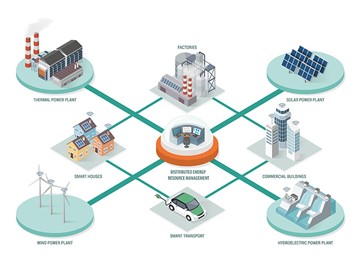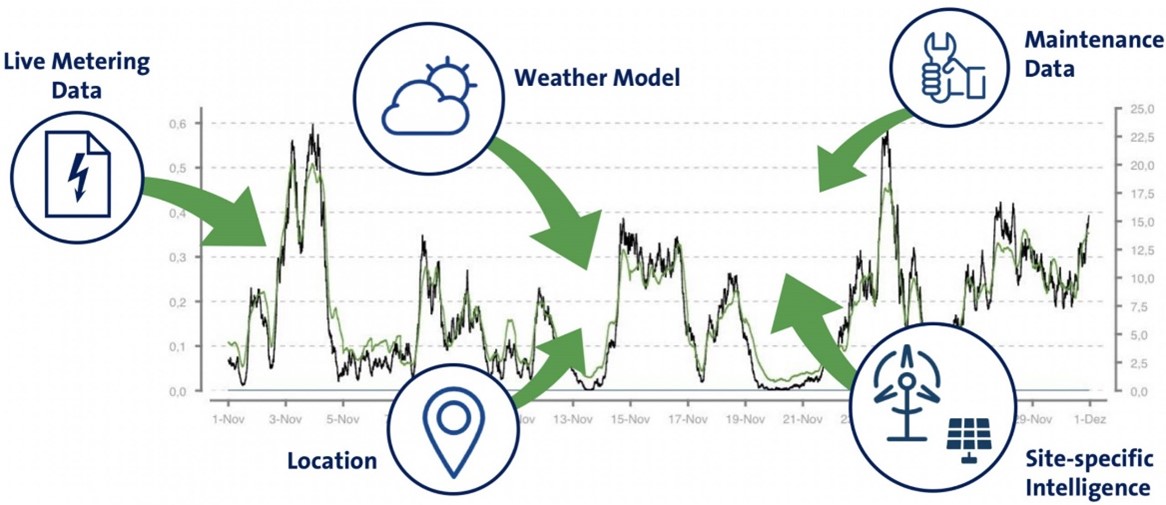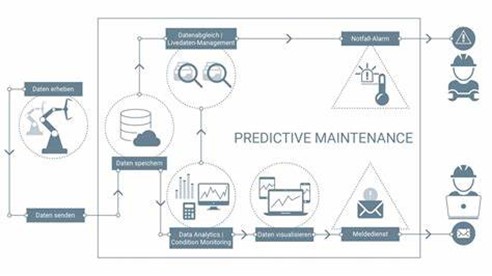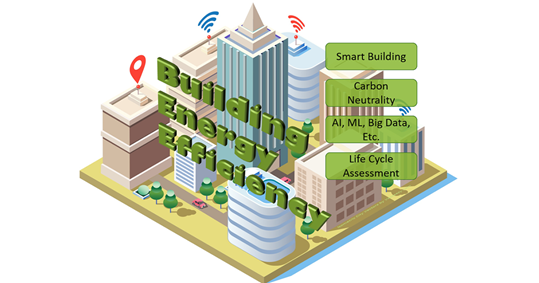How can AI optimize renewable energy production and grid management?

How can AI optimize renewable energy production and grid management?
by Maximilian 02:09pm Feb 03, 2025

AI has the potential to significantly optimize renewable energy production and grid management by leveraging data-driven insights, automation, and predictive capabilities. Here are several ways AI can improve the efficiency, stability, and integration of renewable energy systems:
1. Forecasting Renewable Energy Generation
Solar and Wind Power Prediction: AI can analyze historical weather patterns, real-time meteorological data, and satellite imagery to predict the availability of solar and wind energy. Machine learning models can forecast energy production from these sources with greater accuracy, helping grid operators plan better and adjust their operations to match supply with demand.
Energy Yield Optimization: AI can optimize the positioning and maintenance of wind turbines and solar panels to maximize energy yield. Machine learning models can analyze factors such as geographic location, weather conditions, and turbine efficiency to predict the best operational strategies.

2. Grid Integration and Balancing
Demand Response: AI-powered systems can manage demand response by predicting periods of high energy consumption and adjusting the grid accordingly. This can involve dynamic pricing, adjusting energy consumption patterns, or activating reserve energy sources to balance supply and demand efficiently.
Energy Storage Optimization: AI can improve the operation of energy storage systems, like batteries, by predicting when to store excess energy (e.g., when renewable generation exceeds demand) and when to release stored energy to the grid (e.g., during periods of high demand). This helps smooth out the intermittent nature of renewable energy.
Grid Stability: AI can monitor real-time grid data to detect and address instability, such as frequency or voltage fluctuations. Machine learning algorithms can instantly identify and correct grid anomalies, reducing the risk of blackouts or energy wastage.
3. Predictive Maintenance
Proactive Repairs: AI can monitor the condition of renewable energy infrastructure, such as wind turbines or solar panels, using sensor data to predict when maintenance or repairs are needed. Predictive maintenance helps prevent equipment failures, reduces downtime, and optimizes the lifespan of renewable energy assets.
Anomaly Detection: AI can be used to detect anomalies in real-time data from renewable energy systems. For example, it can spot issues such as faulty equipment, inefficiencies in energy production, or underperformance of solar panels or wind turbines, allowing for quicker interventions.

4. Grid Optimization and Load Forecasting
Real-time Load Forecasting: AI can predict grid loads by analyzing historical energy consumption, weather patterns, and other influencing factors. This enables utilities to optimize how and when they dispatch energy from various sources, ensuring a reliable and efficient energy supply.
Optimal Energy Dispatch: By analyzing real-time data on available energy, AI can help utilities decide the most efficient energy mix, prioritizing renewable energy sources (when available) and reducing reliance on fossil fuels. It can also optimize the scheduling of renewable energy generation to match predicted demand.
5. Distributed Energy Resources (DER) Management
Decentralized Systems: AI can enable better coordination of distributed renewable energy systems (e.g., rooftop solar, small-scale wind, and home batteries) by managing how they contribute to the grid. This coordination ensures that energy from these sources is efficiently fed into the grid or used locally, reducing energy losses and enhancing reliability.
Microgrid Optimization: AI can help optimize the operation of microgrids, which are local grids that can operate independently from the main grid. AI can coordinate the energy production and consumption within these microgrids to ensure they function efficiently while maintaining grid stability.

6. Energy Trading and Market Optimization
Automated Trading: AI can assist in energy market trading by predicting fluctuations in energy prices and optimizing trading strategies for renewable energy producers. AI can assess supply and demand forecasts, weather data, and market trends to make more informed decisions in real-time.
Decentralized Marketplaces: AI can enable blockchain-based decentralized energy markets, where energy can be traded directly between producers (such as renewable energy suppliers) and consumers. AI algorithms can help balance energy flows and transactions, ensuring optimal pricing and distribution.
7. Smart Grid Development
Self-Healing Grids: AI can enhance the development of smart grids that are capable of self-healing in the event of a disruption. By leveraging AI-driven algorithms, the grid can detect faults, automatically reroute power, and minimize the impact of outages.
Dynamic Load Distribution: AI can adjust load distribution dynamically, taking into account real-time energy availability and demand across the grid, ensuring optimal resource usage and minimizing waste.
8. Energy Efficiency in Buildings and Industry
Optimized Building Energy Management: AI can manage energy usage in commercial and residential buildings by analyzing data from IoT sensors, HVAC systems, and lighting. This helps reduce energy consumption and ensures that renewable energy is maximized.
Industrial Optimization: AI can be used to optimize energy usage in industrial settings, ensuring that energy-intensive processes are aligned with renewable energy availability and that demand is met in the most energy-efficient way possible.
By combining these strategies, AI can significantly enhance the performance, efficiency, and sustainability of renewable energy systems, helping accelerate the transition to a low-carbon future.







